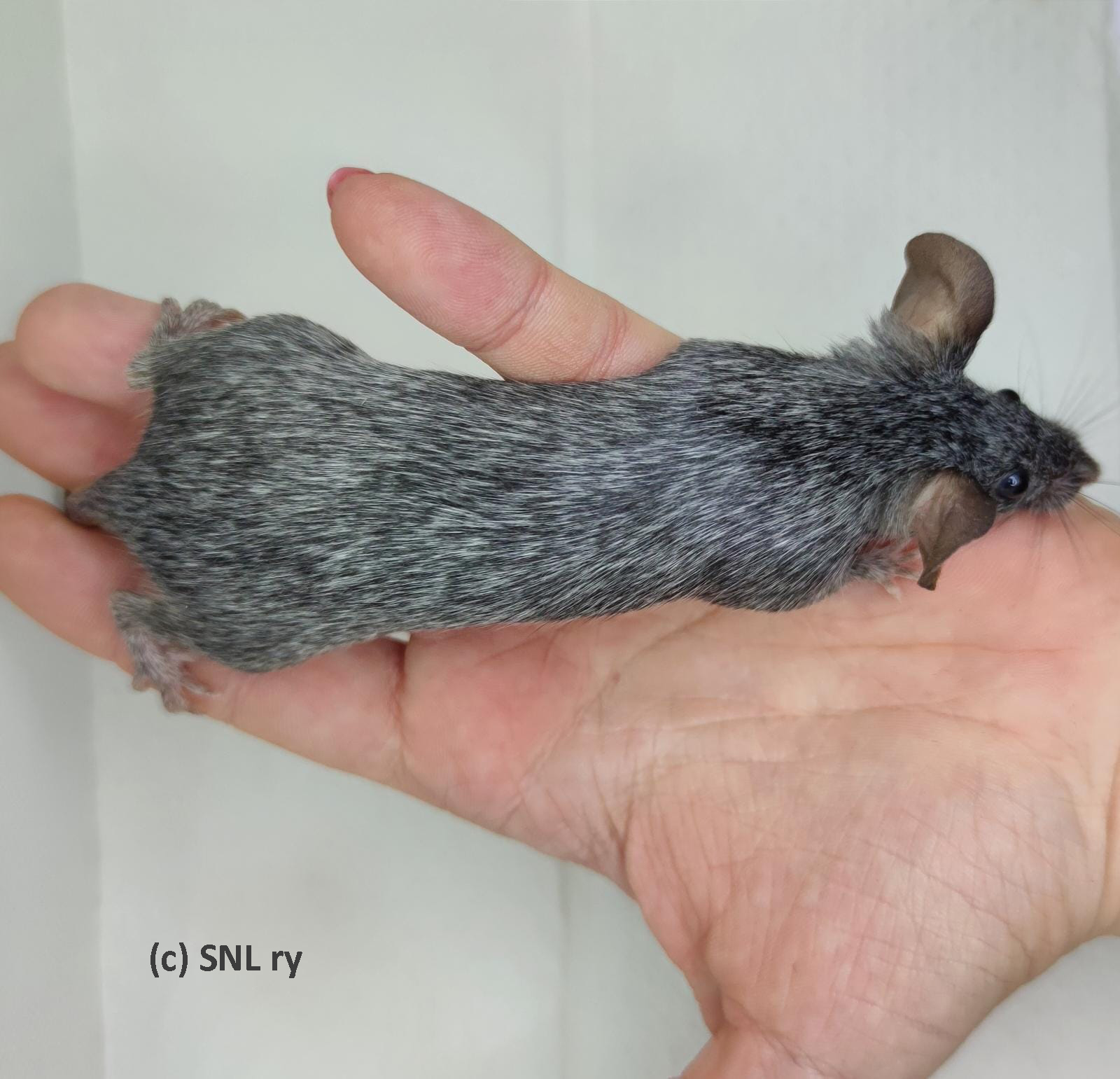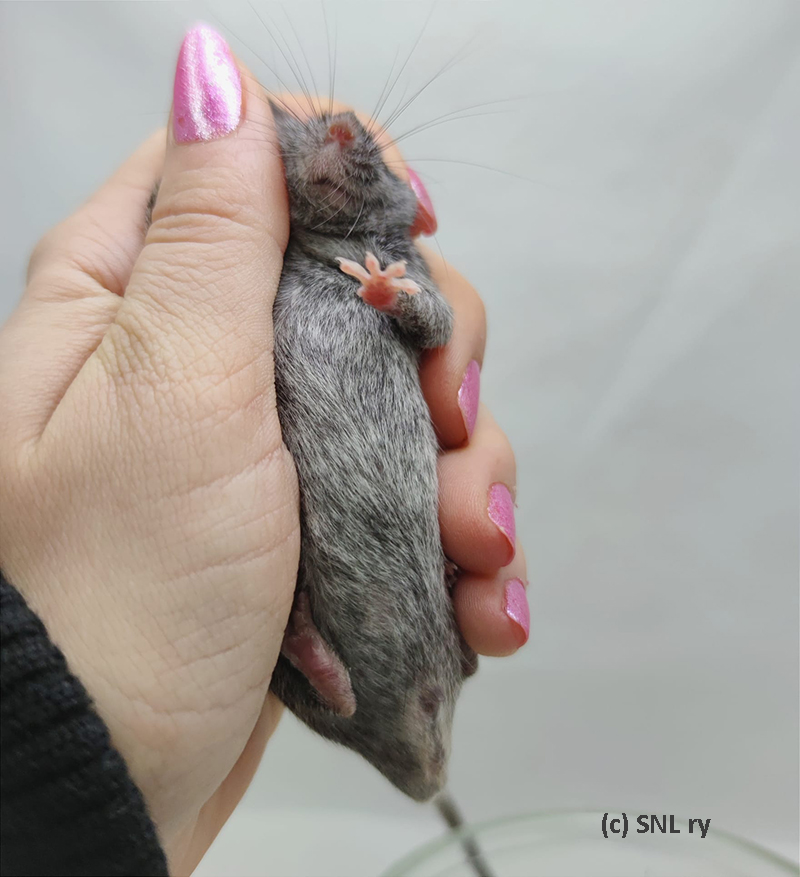Varieties
Marked
Roan (ro)
Rn/Rn tai Rnfkl/Rnfkl - not quite certain
"Roan mice may be shown in any recognized color. The hair is a mixing of white and any other color evenly distributed similar to Roan horses, but not to be confused with Silvered animals. Eye color to match base color."
Breeding information below the pictures.
Quick Look
Roans resemble silver ticked varieties. However, it gives mice with more white than si/si and a darker undercolour. The specific genetics isn't completely certain and some fanciers talk about recessive roans, even though Rn (and Rnfl) is a semidominant. What this recessive roan (and merle) is, genetically speaking, isn't known for certain.
Both Rn and Rnfl are spontaneous mutations. They are possibly alleles, but they can also be members of the same gene cluster. Some roan fanciers have tan bellies turning fox in their roans, but this isn't the case with all roan breeders.
According to the MGI, Rn/Rn gives a mouse with "white hairs are randomly distributed but to the extent that the coat is lightened" and Rn/Rn+ mouse with "white and partially pigmented hairs are randomly distributed and variable in amount", along with a comment on the effect of modifiers. Rnfl has following information: "white hairs are randomly distributed and to the extent that the coat is lightened" in homozygote and "white hairs are randomly distributed and mice appear variegated, the amount of unpigmented hair increases with age, variegation may be influenced by modifier genes" in heterozygote forms.
Furthermore: "Rn and Fkl (both in chromosome 14) might be allelic, but it has proved very difficult to test this point because of the variability of the mottling which each gene causes. It is now clear that Rn and Fkl are not identical. When crossed on to [non Rn or Fkl] Fkl gives a very llght-coloured coat with almost no wild-type patches, whereas Rn, after 3 crosses to [non Rn or Fkl], gives a near wild-type coat with a few small light-coloured spots. Rn/+ Fkl/+ double heterozygotes are very variable, and not certainly distinguishable from single heterozygotes, but among segregating litters from Rn/+ Fkl/+, Rn and Fkl young can be distinguished. No evidence of crossing-over between Rn and Fkl has yet been found, but owing to normal overlapping by Rn and variability of Rn/+ Fk1/+ this evidence would be difficult to obtain. It is thus still uncertain whether Rn and Fkl are allelic or a closely linked gene pair, and it is suggested that the gene symbols should remain unchanged."



